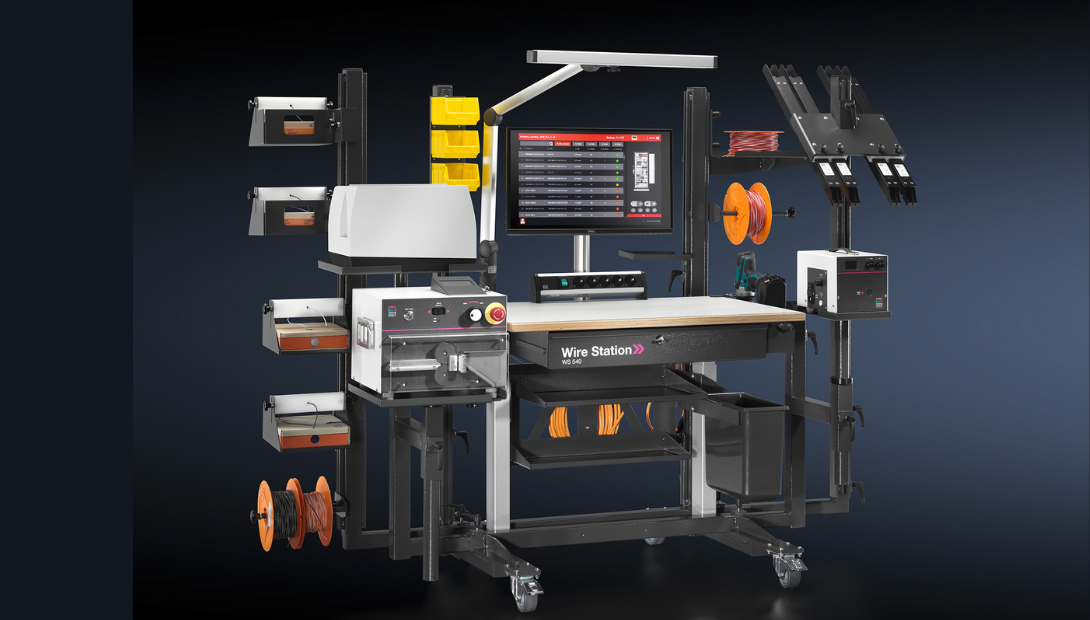
Rittal's New Wire Station 540
The Wire Station brings offers many benefits for workstations across panel building, switchgear manufacturing and in electro-mechanical workshops. For example, thanks to its modularity, the table can be tailored to suit a company’s assembly process. It also allows workshops to take a further step towards automation when used alongside Rittal’s automatic Wire Terminal wire processing machine and the EPLAN Smart Wiring software tool.
Wiring components in panel building and switchgear manufacturing is still a very manual process. Even workshops using the Rittal Wire Terminal still need to install wires by hand, either within the enclosure or on the mounting plate. The same is true of assembling cables with larger cross-sections as well as connectors.
Fully Customisable Wire Workstation
Rittal’s new Wire Station 540 is based on a work table that can be adjusted to suit both the person and their working situation.
Optional accessories include a powerful, dimmable LED light, socket strips and a multi-functional monitor holder. There is also a drawer for storing hand-held tools, cable reels, wire packs and storage trays.
Furthermore, semi-automatic hardware for wire processing - including automatic cut-to-length, insulation stripping and crimping machines - can be easily integrated.
The workstation – which can be fitted with an optional screen – can be used in conjunction with the EPLAN Smart Wiring software. It includes a holder into which can be attached wire rail magazines from a wire terminal wire processing machine.
In addition, work on wires with larger cross-sections as well as special wire-end treatment, can be carried out efficiently and easily on the wiring workstation.
Wire with Ease
The Wire Station is mounted on casters, meaning it is fully mobile, while the (manually or automatically assembled) wires, plus all the tools and semi-automatic machines, as well as the additionally required material, are always at hand.
It means that panel builders no longer need to waste time shuttling backwards and forwards between the enclosure and their workbench.


